Ever since Richard Kerr of AT101 posted a great guide to Asia Miles, I’ve been intrigued by the program. Like some other non-U.S. airline frequent flyer programs (ANA, JAL, Etihad, and more), Asia Miles offers incredible value, if you are willing to take the time to understand the potential. Today I’d like to illustrate some of the best uses of Asia Miles.
As far as frequent flyer programs go, Asia Miles is on the complicated side. So study up until you understand the nuances of the program and how to use them to maximize your miles.
Earning Asia Miles
Three different flexible points currencies transfer to Asia Miles: American Express Membership Rewards, Citi Thank You, and Starwood Preferred Guest Starpoints. All transfer at a 1:1 rate, although sometimes we see promotional transfer rates.
You could also add to your stash of Asia Miles by picking up the Cathay Pacific Visa card issued by Synchrony bank (not an affiliate link). The typical offer is only 30,000 miles, but we have seen 50,000 mile offer from time to time. The earning structure of the card is odd. It offers 2 miles per dollar spend on eligible Cathay Pacific travel, 1.5 miles on dining, 1.5 miles per dollar on purchases outside the United States, and 1 mile per dollar on domestic purchases.
I’ve never seen another card with a bonus on purchases abroad. Given that this is integral to the earning structure, it makes sense that the card has no foreign transaction fees.
Understanding the Asia Miles award charts
Asia Miles has two primary award charts. The first applies to flights with Cathay Pacific, or Cathay Pacific plus one partner (“mixed” awards). The mileage requirements are based into award zones.
The chart is a bit confusing at first glance. You might think that the distance is the total distance flown, but it is actually the one way distance flown. So if you are flying from LAX to LHR, a distance of about 5,400 miles, the trip would fall into zone D. This means that ticket would cost 70,000 miles for a one-way award, or 120,000 miles for a round-trip award.
You are also allowed one stopover on one-way awards, and 2 stopovers, 2 transfers, or 1 open jaw on round-trip award. The rules just get more confusing from there, including details on what partners are included in which chart, so I’ll encourage you to read Richard’s guide to find out some of the tricks. Make sure you check out his discussion on one-way award pricing.
The second award chart is the Oneworld award chart. This is used for awards that include 2 or more Oneworld carriers besides Cathay. As an example, an award with flights on Cathay, JAL, and American would use the Oneworld chart. So would an award including exclusively Qantas and LAN (weird, but totally possible, as you’ll see later).
Unlike the first award chart, this one does simply calculate the award price based on cumulative distance flown. It also only applies to round-trip travel, although you are allowed up to 5 stopovers, 2 transfers, and 2 open jaws. This is amazing and basically leaves the world at your fingertips, as we’ll see later. Most of the best uses of Asia Miles include stopovers in the ticket.
Redeeming Asia Miles
A limited number of Asia Miles awards can be booked online. You either have to use the award search directly, or you have to use the award request form (you’ll have to log into Asia Miles to see it). Flights on Cathay Pacific
The other option is calling Cathay Pacific at 1-866-892-2598. From everything I’ve read, the hold times are incredibly long, and agents can be confused by the nuances of their own program. If you aren’t getting the price you expect, it might be worth HUCA, terrible hold time and all.
Fuel surcharges and taxes
Sadly, Asia Miles passes on fuel surcharges. This means you should avoid flying British Airways, if possible. There are a couple route exceptions, though (SEE: Avoiding fuel surcharges: little known British Airways routes where it’s possible). Qantas might be another candidate to avoid, if you can.
Cathay has more reasonable fuel surcharges on its own flights, and most of American Airlines and LAN flights are YQ free. You’ll be hit with fuel surcharges on most other Oneworld members.
Still, by planning strategically you can save enough miles using the sweet spots on the Asia Miles award chart that paying a few $100 more in surcharges could be totally worth it.
So, without further ado, here are several of the best uses of Asia Miles:
Around the world in business class
This is where Asia Miles really, really shine. Flying business around the world is at the absolute top of my list when it comes to best uses of Asia Miles. A few of the award bands are fantastic sweet spots that let you cruise around the world on multi-stop itineraries in business class for a very reasonable number of miles. Consider the following trip:
Itinerary: LAX-NRT-HKG-KUL-LHR, CDG-ORD – just shy of 20,000 flown miles
Carriers: JAL, Cathay, Malaysia, American
This trip costs an amazing 140,000 Asia Miles for business class. Obviously you’ll need to fill in the gaps between London and Paris, and Chicago and Los Angeles. Overall, it’s a sweet deal.
If you want to kick things to the next tier, toss in Australia. The trip turns into the following:
Itinerary: LAX-MEL-HKG-DOH-AMM-ORD – about 23,000 flown miles
This gives you 4 destinations, as well as 4 long-haul legs in business class on Qantas, Cathay, Qatar, and Royal Jordanian. The trip only costs 160,000 Asia Miles.
Around the world in first class
Well, an itinerary of Los Angeles to Hong Kong to London and back to Los Angeles really isn’t much of an around the world trip. But you *can* experience 3 different first-class products for 205,000 Asia Miles, which is a decent deal.
I’d argue that business class on the same itinerary would be far better at a mere 140,000 miles. I mean, what do you need beyond a bed in the sky? British Airways First is also nothing to write home about. It’s been called the “best business class product in the sky“.
You could up the ante a bit by including Australia in your itinerary instead of Hong Kong for only 30,000 more miles (235,000 total). This would axe any enjoyment of Cathay, but would add up to two segments in Qatar first.
Just remember the pile of taxes you’ll pay for BA first-class, on top of the utterly obscene UK departure fee.
Overall, I’ll make the case that business class is where it’s at. The premium for business over economy is quite reasonable, but the premium for first class is less so. Award zones 10 and 11 of the Oneworld chart are ideal for most around the world itineraries in business. But you could always push the limit and try the following:
Itinerary: DFW-GRU-MAD-LHR-CPT-DOH-AKL-HKG-LAX-DFW – flown distance of 44,900 miles!
Carriers: LAN/Iberia/BA/Qatar/Cathay/AA
Los Angeles and London would have to be transfers, not stopovers. This *should* be valid by my reading of the rules. I haven’t tried to actually price it. Not to mention finding award availability for all those segments would be quite a chore.
The cost? Only 220,000 Asia Miles in business class.
Business-class under 5,000 miles
One of the better spots on the Cathay or single/mixed-airline Asia Miles award chart is business-class trips of just under 5,000 miles. One-way awards are a mere 45,000 Asia Miles, and round-trips are only 80,000 miles. Remember that this chart prices tickets based on one-way distance, not cumulative distance.
This sweet spot covers trips like Helsinki to northeast Asia on partner FinnAir. This is a fairly sour spot on some other carriers’ award charts. FinnAir serves a significant number of destinations in Asia, including Tokyo, Nagoya, Fukuoka, Seoul, Beijing, and Shanghai, all of which fall under this 5,000 mile bar. Consider even adding an open jaw:
Itinerary: HEL-ICN, then NGO-HEL
This was intriguing enough for me to try and find some availability. This didn’t go so well. I managed to find a couple seats from ICN to HEL, but nothing from the other airports. Finnair appears fairly stingy with space.
U.S. to Europe is another zone where this can be advantageous, if you are based in the Midwest, Texas, or East Coast. Watch out for fuel surcharges, though, unless you can find some AA saver space. Here is a great option:
Itinerary: DFW-LHR, then AMS-DFW
Both of these non-stops are a hair under 5,000 flown miles. If you book this using AA’s program, it’d be 115,000 AAdvantage miles round trip. Asia Miles? A mere 80,000 miles using the single/mixed carrier award chart!
Be aware, however, that there may be fuel surcharges levied on transatlantic flights, including American Airlines flights. Still, this is probably worth it since you are saving 35,000 miles versus your disAAdvantage miles.
One-way business class
If you read Richard’s guide, you’ll remember that one-way awards are priced simply based on origin and destination. A great example is San Francisco to Sydney via Hong Kong. The nonstop distance from SFO to SYD is just under 7,500 miles, so a business-class ticket would cost 70,000 miles. This is actually *not* better than using Alaska miles for the same trip. But it is still better than many other programs.
This nuance of Asia Miles pricing places one-way awards with favorable geography solidly among the best uses of Asia Miles.
Consider also the case of Cape Town, South Africa to Aukland, New Zealand. If flown nonstop, this trip would be 7,314 miles, barely falling in award zone D. However, an ideal Oneworld routing is through Doha with a single connection on Qatar airways, for a total distance flown of 13,647 miles! This is almost twice the point-to-point distance! All for only 70,000 Asia Miles.
I even found this ticket on the Cathay Pacific website. And yes, it priced out at 70,000 miles and ~$200 in fees.
From what I found, not all routes price out based on the point-to-point distance, but many do. I was disappointed to find that SFO-HKG-CTS price out at 85,000 miles, which was based on the cumulative distance flown.
Another zany option is Easter Island to Aukland. Considering that you will need to first fly back to South America on LAN before heading *all* the way across the Pacific. A one-way award should only set you back 45,000 Asia Miles in business class, if it prices based solely on origin and destination.
All in all, if you know how to work the geography in your favor, you can exploit the Asia Miles single/mixed carrier chart to great advantage.
Multi-stop Europe trip from the East Coast
You might think that a round-trip flight to Europe on Oneworld carriers for 115,000 AA miles is a decent deal. However, Asia Miles blows this out of the park. Plus, you can even add extra stops, something that American does not allow on awards. Consider the following:
Itinerary: JFK-HEL-CDG on Finnair, then MAD-JFK on Iberia
This itinerary works out to be only 8,887 flown miles, placing it award zone 6 of the Oneworld multi-carrier chart. The cost? A mere 85,000 Asia Miles in business class via the Oneworld chart. Definitely one of the best uses of Asia Miles.
This itinerary assumes you’ll fill in the CDG-MAD leg with a cheap EasyJet flight. You can fill in that segment in business on the same ticket for an additional 10,000 miles. But intra-Europe business class flights are nothing to write home about. Still, a 3-city itinerary for 85.000 miles is a sweet deal.
Lengthy multi-stop round-trip tickets
The best uses of Asia miles expand from here into essentially any lengthy multi-stop itinerary in the sweet spots of zones 10 and 11 of the Oneworld award chard. Your best options will usually be through Oneworld hubs. Consider this circuit of the Pacific Rim:
Itinerary: SFO-NRT-HKG-MEL-AKL-SCL-LAX
Distance: Just shy of 25,000 miles
This is a great deal at only 160,000 Asia Miles. I did have some trouble finding award space on LAN from Santiago to Los Angeles. I would suggest swapping out either DFW or MIA as your return point, as American is also an option for those routes.
You could do an abbreviated version of this for only 140,000 Asia Miles:
Itinerary: SFO-SYD on Qantas, then AKL-SCL on LAN, then SCL-LAX on LAN
This also takes advantage of the double open jaw offered on Asia Miles award tickets. Ultimately, these are the best award zones to use for multi-stop tickets:
Band 6 covers some options from the East Coast to Europe, and bands 10 and 11 are fantastic for loop trips (like the one above), or around-the-world itineraries.
Other best uses of Asia Miles?
There are plenty more. I’ve only scratched the surface. These 6 best uses of Asia Miles hopefully give you a feel for how you can use the program to your own advantage in the future.
Again, if you suddenly find yourself in need of Asia Miles, you have plenty of options. Starpoints, Membership Rewards, and Citi Thank You points all transfer to the program.
Conclusion
Don’t miss the value of the Asia Miles program. If you have one takeaway from this, I want you to understand that AsiaMiles is a phenomenal program for long haul, multi-stop tickets on multiple Oneworld carriers.
Whatever legwork you have to do to pin down an itinerary will be almost invariably be worth the savings in miles. If you had to book any of these tickets with either British Airways Avios or American Airlines miles, you would be paying an absolute fortune.
Which of the best uses of Asia Miles do you see yourself using? Do you think you’ll be exploiting the incredible value of this awesome program?
Maps generated by the Great Circle Mapper – copyright © Karl L. Swartz.
This site is part of an affiliate sales network and receives compensation for sending traffic to partner sites, such as thepointsguy.com. This may impact how and where links appear on this site. Responses are not provided or commissioned by the bank advertiser. Some or all of the card offers that appear on the website are from advertisers and that compensation may impact on how and where card products appear on the site. Any opinions expressed in this post are my own, and have not been reviewed, approved, or endorsed by my advertising partners and I do not include all card companies, or all available card offers. Terms apply to American Express benefits and offers and other offers and benefits listed on this page. Enrollment may be required for select American Express benefits and offers. Visit americanexpress.com to learn more. Other links on this page may also pay me a commission - as always, thanks for your support if you use them
User Generated Content Disclosure: Points With a Crew encourages constructive discussions, comments, and questions. Responses are not provided by or commissioned by any bank advertisers. These responses have not been reviewed, approved, or endorsed by the bank advertiser. It is not the responsibility of the bank advertiser to respond to comments.

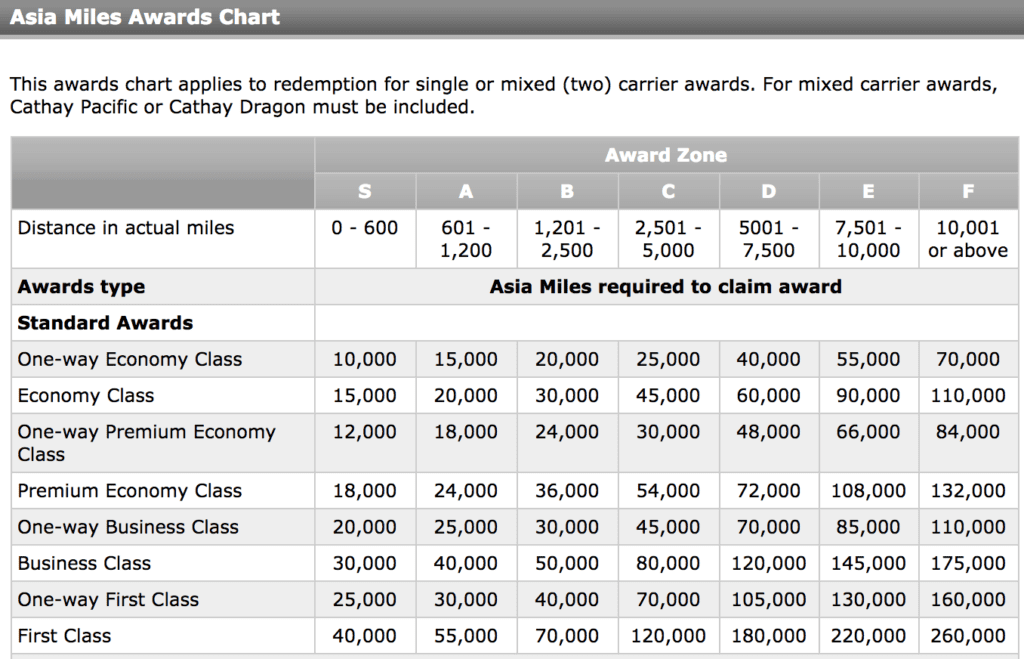
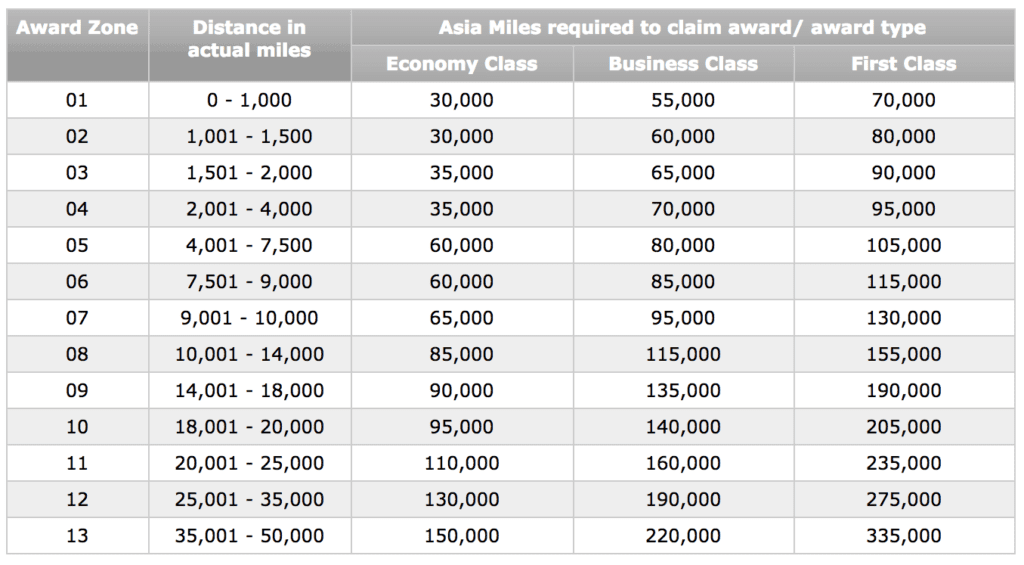
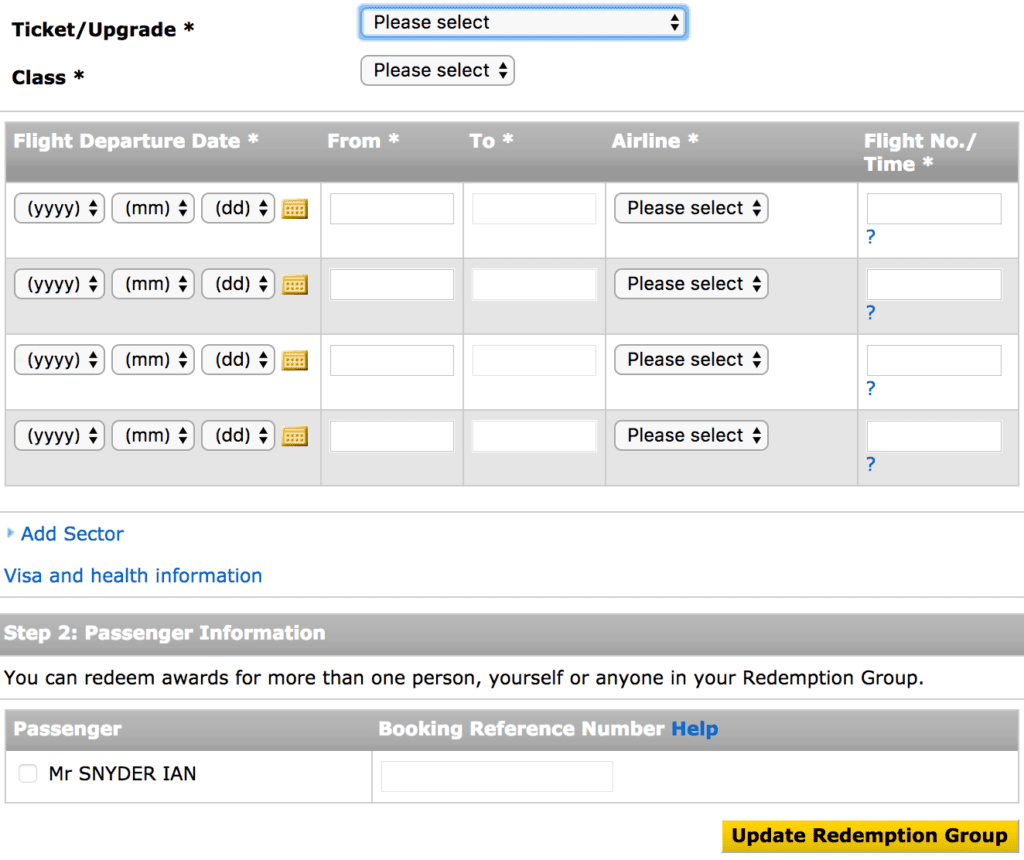
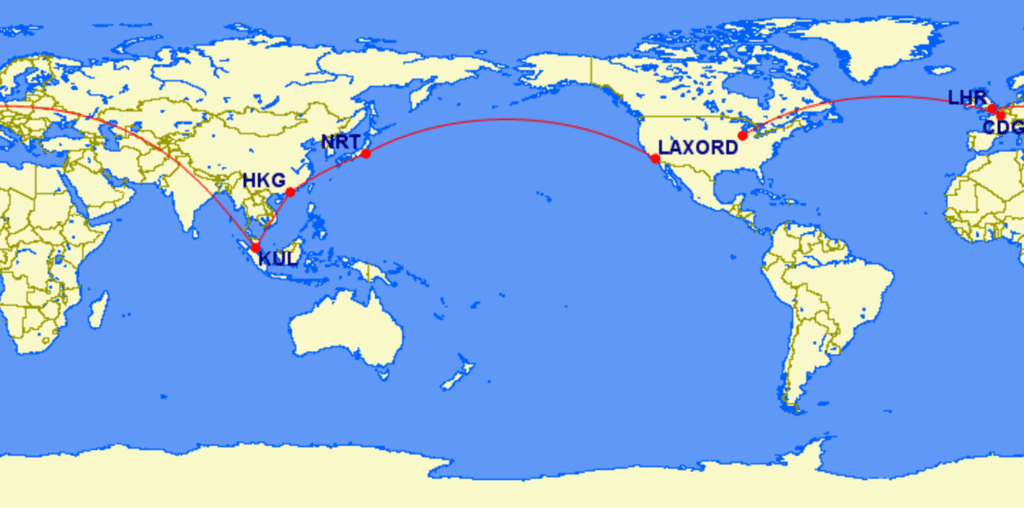
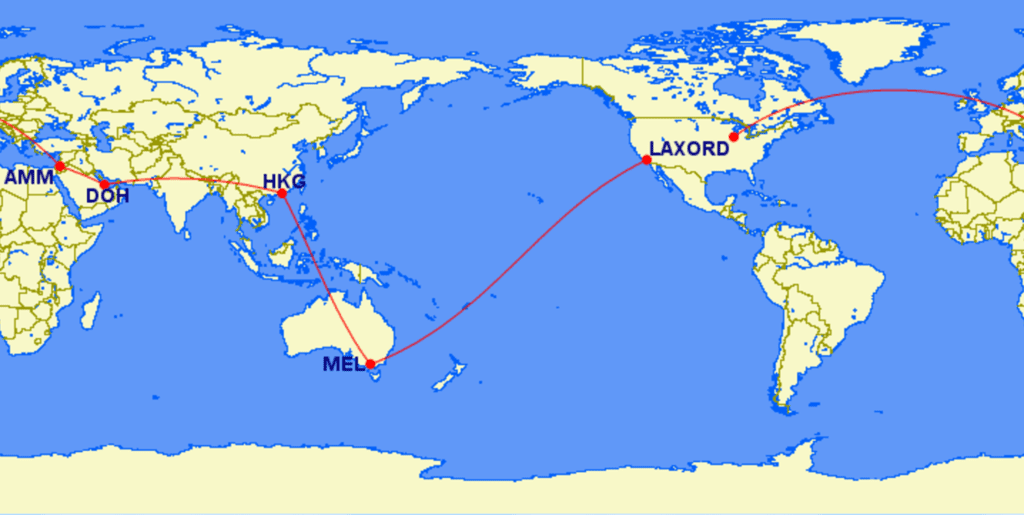
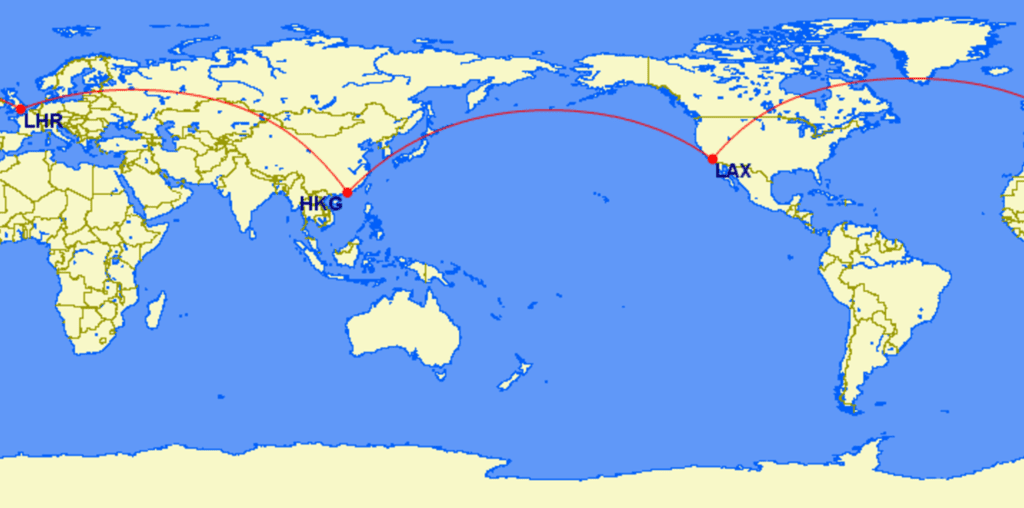
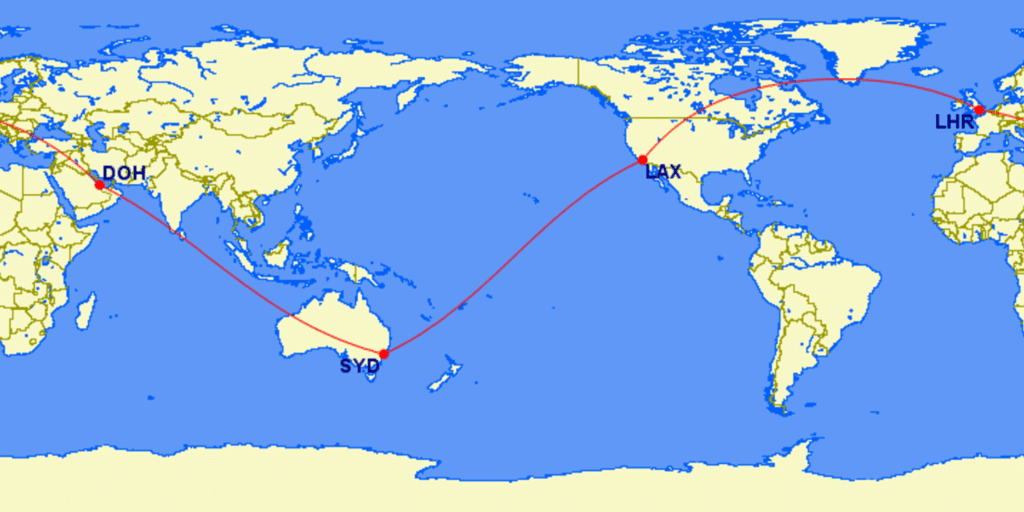
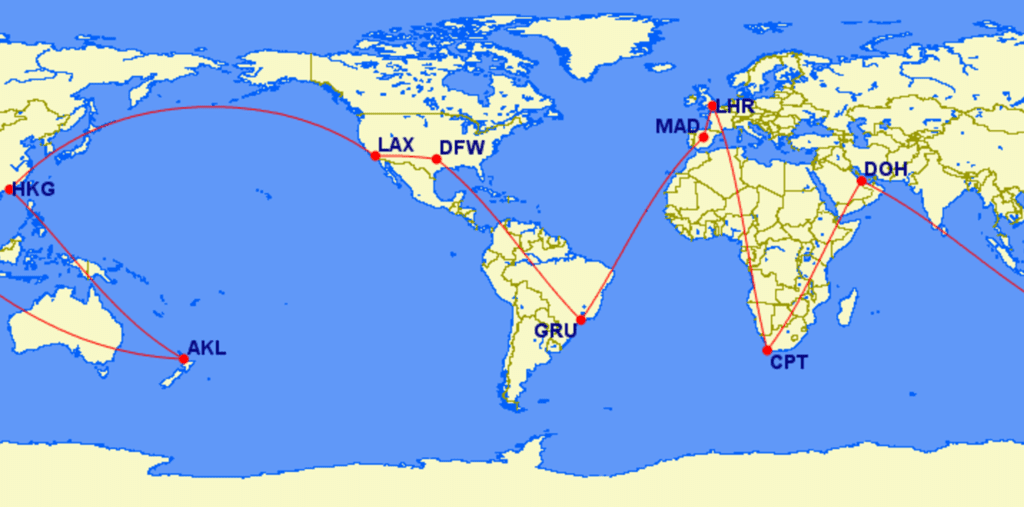
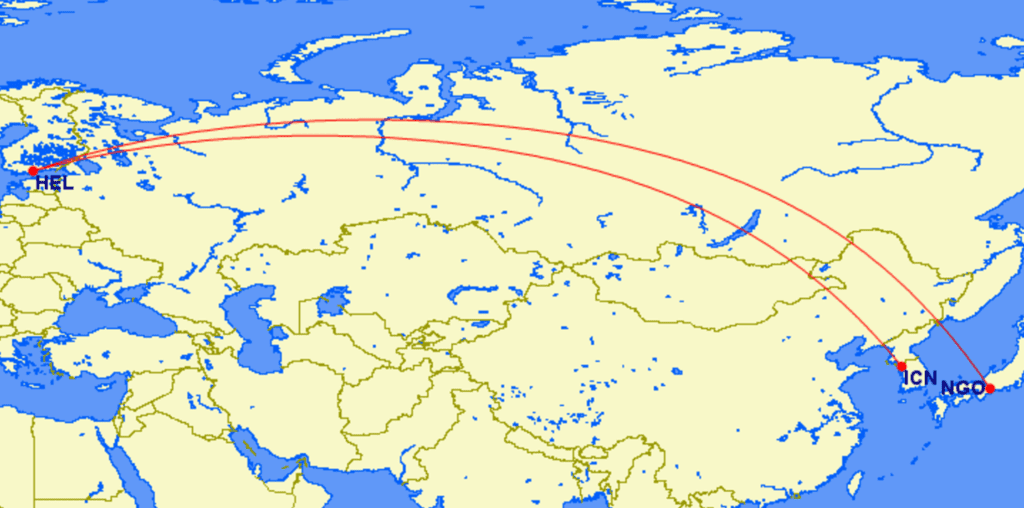
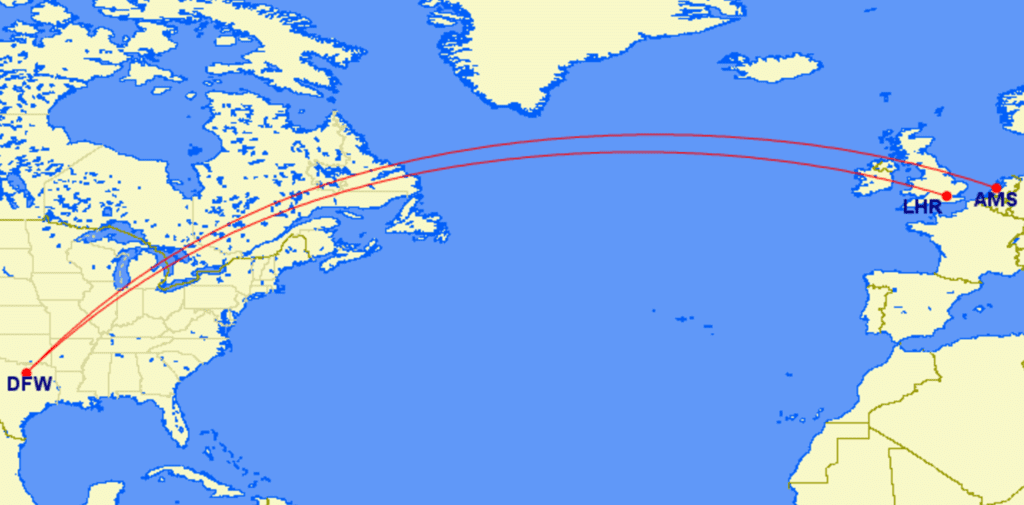
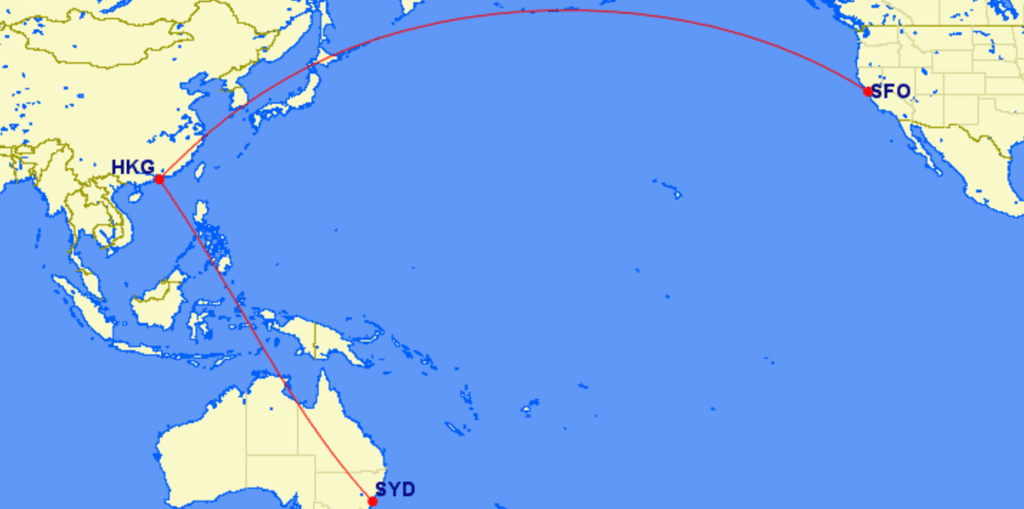
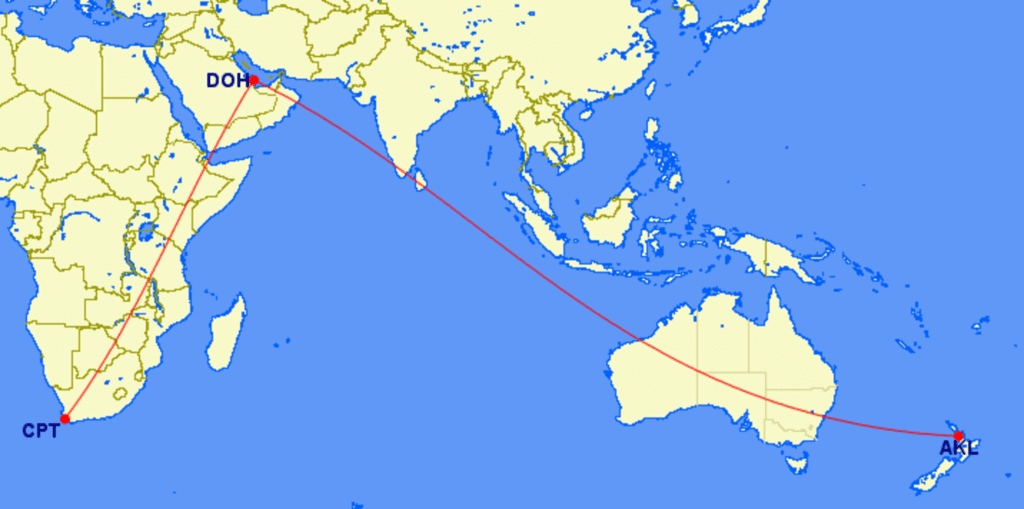

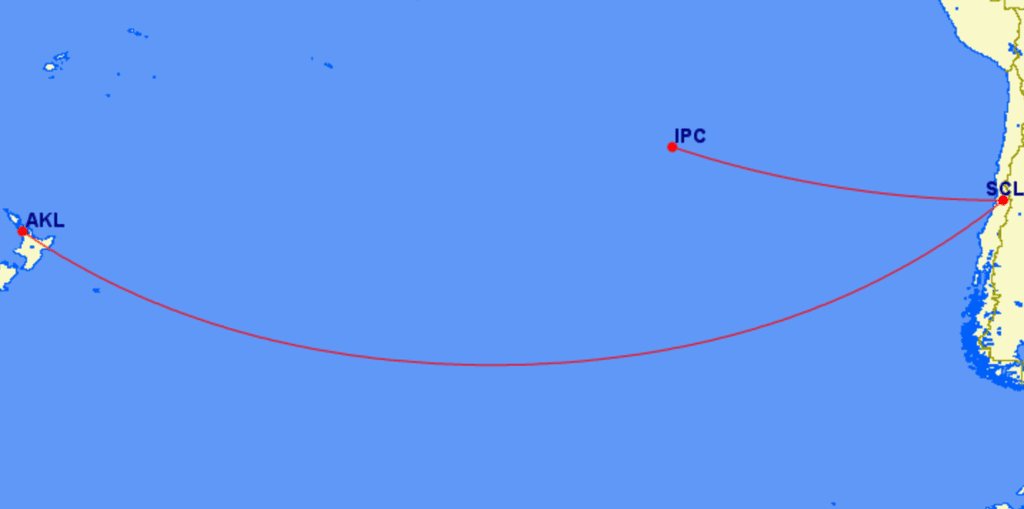
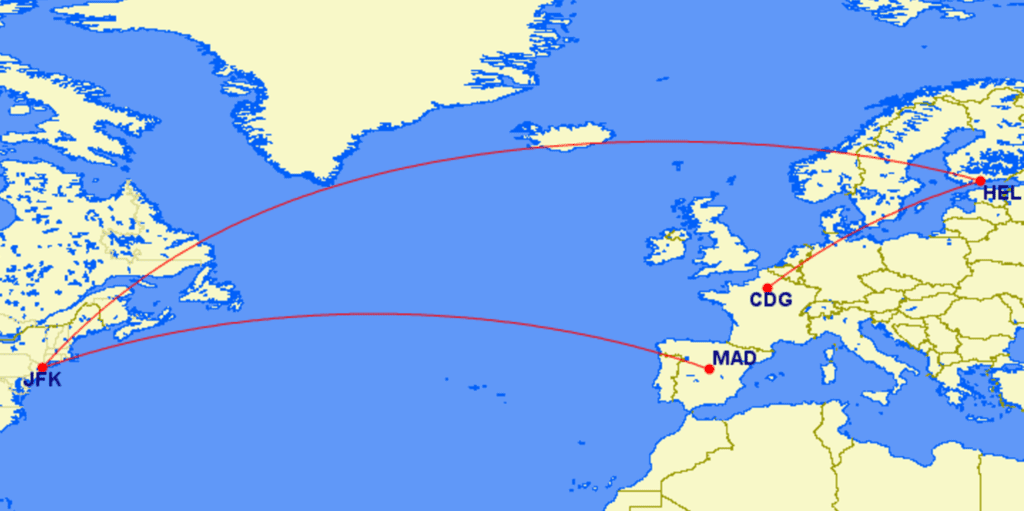

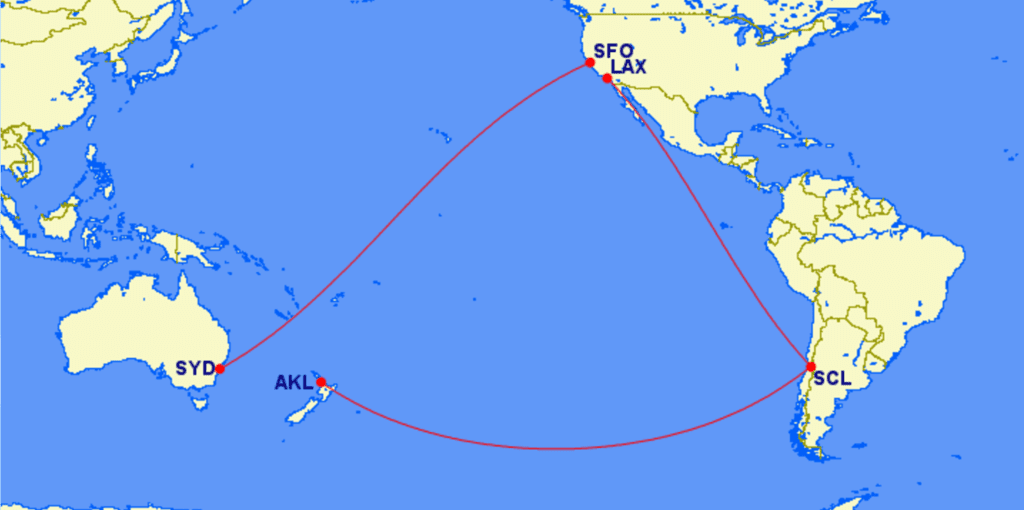


 Dan Miller travels with his wife and 6 (SIX!) children. He loves to help families travel for free / cheap, especially larger families. If you are looking for help, drop him an email at
Dan Miller travels with his wife and 6 (SIX!) children. He loves to help families travel for free / cheap, especially larger families. If you are looking for help, drop him an email at 
Thanks for this. A very useful post, which is rare these days on these moronic credit card shilling, click bait nonsense blogs, especially one big one that you can always tell which one it is by the headline before reading the name of the blog above. Definitely opened up some thoughts for me. One thing though, if you had listed the estimated YQ on some of your proposed itineraries above, it would have been even better (i.e. the SFO-NRT-HKG-MEL-AKL-SCL-LAX for example…would love to know the YQ there).
Thanks, Antonio!
I considered trying to find the YQ for some of these, but it would have required spending a lot of time on the phone with a Cathay agent. I *do* see how people would be interested in this. In general, you’ll find:
AA – none to moderate (Europe)
LAN – none, I believe
Cathay – very resonable
JAL – reasonable
Finnair – moderate
Qatar – moderate
Qantas – moderate, I believe
BA – awful, except in a few select instances (departing HKG and Brazil), unless these have died
RJ and Malaysia – I have no clue
What is the fuel surcharge on AA flights to Europe?
About $200, from what I’ve read. If I could have priced this online (AA flights are not offered online), I totally would have checked this.
I’m not sure your note about only considering origin and destination for distance calculation is correct. I’ve tried redeeming for San Francisco Bay Area to Kauai in the past with Asia Miles. OAK-LIH on Alaska direct is about as far as you can go in its mileage band, so there was only one option that we could redeem for. The other options, which required a connection in LAX (American) or SEA (Alaska) were charged at a higher mileage rate.
Again, it’s a *sometimes* thing. I think I mentioned that in text (SFO-HKG-CTS). Did you call and have the agent price it?
There are definitely examples where it works, and some where it doesn’t.
Just be careful when transferring Amex Membership Rewards point to Asia Miles. I’ve transferred over 300K points for a specific award booking five weeks ago and nothing.
I’ve called both Amex and Asia Miles and nothing can be done. Just wait for the transfer to complete, which can take up to 90 days. Amex says the transfer has been done on their end, but it shows on their system as Asia Miles did not accept the transfer on their end yet.
The Asia Miles OW partners chart can be great for these multi-stop awards if your dates are unlikely to change and can find award space on partners. No one ever mentions this. Once you have to change dates, especially on routes with limited availability to start with, you’re going be in big trouble, plus you will have to pay change fees. Asia Miles isn’t like AA where date changes and routing changes are free. Once you’ve started traveling, you can’t even downgrade your class of service on a date change if on a biz ticket but only economy is open.
What is the expiration date for miles in the Asia program? if non existent, then moving miles there could be a good strategy, particularly if you feel confident in using those miles at some point.
As someone said above, this is one of the best blogs in a very long time from anyone.
@ Byron, they expire after 3yrs IIRC.
I’ve been researching Asia miles program for the last week or so for possible TYP redemption at the 20% bonus. It is my understanding that to calculate the distance, you have to take into consideration all of the stops on the exact route you are booking. So, if you are trying to book A to C but the flights you are actually booking make you stop at B, you have to count the miles from A to B to C to calculate the number of Asia miles you need. See http://pointmetotheplane.boardingarea.com/2016/12/28/asia-miles-mistake/
Sometimes. Almost certainly if you are booking by phone and want a stopover. However, some routes online price out at only the point-to-point distance. See the CPT-DOH-AKL example above. It only costs 70,000 Asia Miles. Also, consider HKG-LHR-HEL for 45,000 Asia Miles.
Hi – I am truly grateful for this post.
Quick question about the rtw: Doe the distance between two cities on an open jaw segment count toward the mileage total?
Thanks!
It shouldn’t. Per the conditions on the Oneworld chart:
1. The awards zone is determined by the actual miles flown in all of the sectors of your itinerary.
2. You can make a maximum of five stopovers, two transfers and two open-jaws at either origin, en-route or turnaround point, subject to airline partners’ terms and conditions.
The distance between your open jaws shouldn’t be counted. However, if you’re *really* pushing the limits of what constitutes a round-trip, you may run into problems there. I’d HUCA if you don’t get an agent that is willing to work with you.
When you wrote this article, did they have this comment below the Standard award chart: “1.Award zones are based on the one-way distance between the origin airport and destination airport. If connecting sectors are involved, the sector distances should be added together to determine the total one-way distance and the applicable award zone.”
When I tried LAX – HKG – SYD I was hoping it would be 70k one way, but per their “Plan a Trip”, it’s showing up as 110k points which Zone F of the standard chart, 10,000+ Miles. I’m trying to determine if they added that rule or something else is going on.
What I meant to ask is if the 2nd Sentence in 1. is new since you wrote this where about the connecting sectors (apparently their term for a flight leg or segment).
That note was there when I originally wrote this piece.
As I wrote, itineraries with connections were hit or miss. I priced out a trip to Sapporo from the PNW, which should have priced a the 45,000 level in business, but it didn’t. I got some itineraries from Hong Kong to price out with lower prices, even though they had a connection in Doha (obviously on Qatar).
I *did* notice that some things had changed last time I ran a search. When I searched the HKG-HEL route, options would show up as 45,000 miles + taxes and fees. However, this time whenI clicked through to book, the price jumped to 70,000 miles, which is the correct price based on segment distance. This wasn’t the case previously.
While I haven’t had time to test this theory, my guess is that Asia Miles is in the process of patching these itineraries and charging the correct number of miles per their terms. No more loopholes.
This leaves direct flights at the top of the 45,000 band in business and around-the-world or multi-stop trips as the best use of the miles, in my opinion.
Good to know. Seems like less of a leg to stand on when it comes to getting the cheaper price. But 190k isn’t the cheapest, it still does get me from Washington to Sydney and Aukland and back in business.